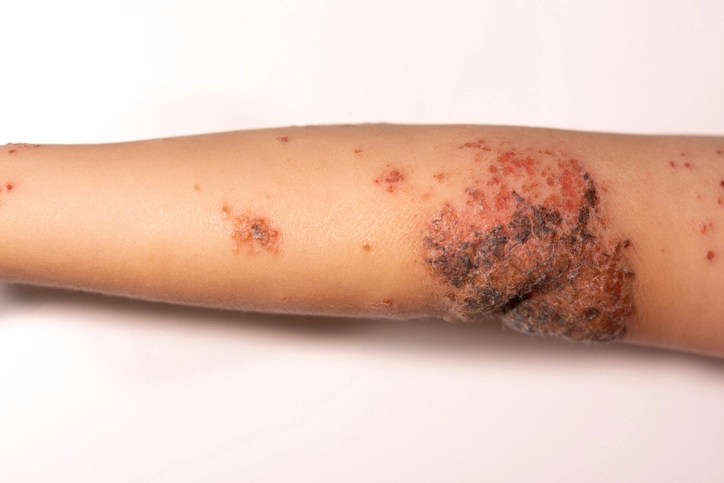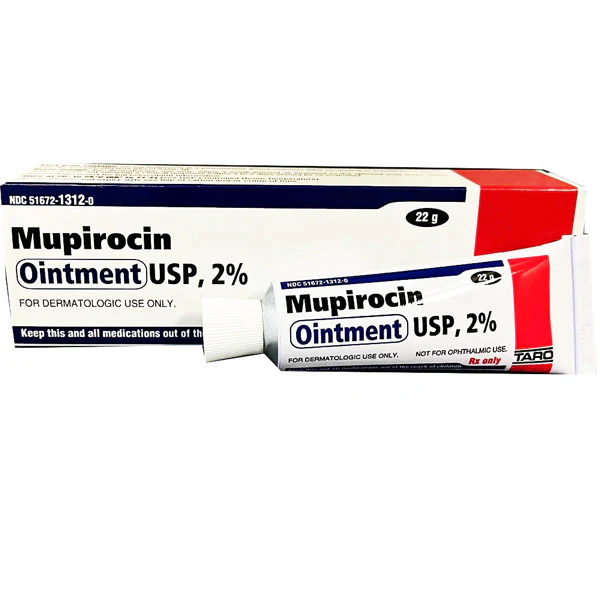One of the most difficult things for a parent to see is a child suffering from any kind of illness or ailment. Unfortunately, it’s a reality we must face at some point—from diaper rashes to the common cold to ear infections to skin conditions—it’s inevitable.
And while some illnesses are expected (like ear infections and the flu), you might not be as familiar with other infections. In this article, we will discuss a common-occurring but lesser-known skin infection that affects children called impetigo.
Impetigo is a highly contagious bacterial skin infection easily transmitted through direct contact with infected individuals or touching contaminated surfaces. Due to its appearance, it can be alarming or even confusing for parents; however, it can be easily managed with proper treatment.
Keep reading to learn all you need to know about impetigo in children—from its causes and symptoms to the best ways to prevent and treat it.
Key Takeaways:
- Impetigo is a common bacterial skin infection among young children that spreads easily through direct contact with an infected individual or item.
- There are three types of impetigo: bullous impetigo (the most common type), non-bullous impetigo (most common in infants), and ecthyma (least common).
- Impetigo can be effectively managed with proper hygiene and timely medical treatment.
- - the “punched out” ulcerative form - you have this as a complication but it is essentially a 3rd form if you want to be specific or not)
What is impetigo?

Impetigo is a superficial bacterial infection caused by two main types of bacteria: Staphylococcus aureus and group A streptococcus. It accounts for about 10% of skin conditions in children and is the most common skin infection in kids between the ages of 2 and 5, but anyone can get it.
Children are more likely to develop impetigo when their skin is already irritated by another problem, such as eczema, poison ivy, insect bites, and cuts or scrapes.
What causes impetigo?
Impetigo is most frequently seen during warm, humid weather and spreads through close contact or sharing personal items such as towels, sheets, or toys.
Conditions like atopic dermatitis can increase susceptibility to impetigo. Impetigo-causing bacteria typically enter the skin through a small cut, scrape, insect bite, or existing skin conditions like eczema.
Impetigo Infection Symptoms
Impetigo symptoms can vary depending on the type of impetigo and the individual’s skin color.
Generally, an impetigo infection develops within three days of bacteria infecting the skin, and the first symptoms are typically red sores or bumps that may itch. These spots usually form around the nose and mouth and, over a few days, develop into blisters with yellow fluid inside, discharge, or honey-colored crusting. It usually will have a reddened base of skin. In some severe cases, it can leave ulcers on the skin with darkened borders.
There are two main types of impetigo:
- Non Bullous Impetigo: This is the most common form and starts as red sores that rupture and ooze, forming a yellow-brown crust.
- Bullous Impetigo: More common in infants, this form features larger blisters that may not rupture as quickly but still form a brownish crust over time.
- Ecthyma: A less common form of impetigo that develops into large “punched out” red sores with darkened borders of affected skin.
Is impetigo contagious?
Impetigo is highly contagious, spreading through direct contact with the sores or by touching items that came in contact with the infected area. This makes impetigo quite common in places like childcare centers, pools and during sports activities where close contact is frequent.
Diagnosing Impetigo
Families should see a doctor for a proper diagnosis, as other skin infections can appear similar.
A doctor can typically diagnose impetigo based on the appearance of the rash. Occasionally, a swab might be taken from the blister fluid to pinpoint the specific bacteria, especially if the infection does not respond to initial treatment.
<div fs-richtext-component="cta" class="content_cta">
<div class="content-cta__title">
<div class="y-tex-xxs text-color-white">
Blueberry - Rated best for online pediatrics!
</div>
</div>
<div class="y-text-2xl text-color-white">
👩🏽⚕️ Chat With A Pediatrician About Your Baby's Skin Infection
</div>
<a href="https://app.blueberrypediatrics.com/join_blueberry_18a_cart?promo=blog100"
target="_blank" class="content-cta_btn w-button">
Get Started
</a>
<link rel="prefetch" href="https://app.blueberrypediatrics.com/join_blueberry_18a_cart?promo=blog100">
Impetigo Treatment

Impetigo is a bacterial infection, so treatment involves prescription topical antibiotics and, in some cases, oral antibiotics. Individuals with a weakened immune system may require additional treatment for impetigo.
Your child can return to school and other activities after being on an effective antibiotic regimen for 24 hours and covering any draining spots.
Topical antibiotics
Your child's doctor will likely prescribe an antibiotic ointment, such as mupirocin, which should be applied directly to the sores after cleansing the area with mild soap and water.
Dr. Tellez emphasizes the importance of hygiene in treating impetigo, "Cleanse the affected area a few times a day with mild, unscented soap and water. Follow that with an antibiotic cream or ointment, then cover it with a bandage to prevent the spread of the infection."
Oral antibiotics
Impetigo typically resolves in 5-7 with topical antibiotics; however, an oral antibiotic may be prescribed if the infection does not respond to topical treatment or is widespread.
Regardless of the type of antibiotic prescribed, it's important to complete the full course of treatment as instructed by your child's doctor to prevent complications or antibiotic resistance.
Preventing Impetigo

Impetigo can spread through contact with infected skin or items that have come into contact with infected skin. Preventing impetigo involves maintaining good personal hygiene and taking precautions to avoid the spread of bacteria. Here are some tips:
- Hand washing: Encourage thorough and frequent hand washing with soap and water.
- Nail care: Keep your child's fingernails short to prevent bacteria from collecting under them.
- Avoid sharing personal items: Do not share towels, sheets, clothes, or toys with someone with impetigo.
- Clean and cover wounds: Pay special attention to cuts, scrapes, insect bites, and existing skin conditions. Keep these areas clean and covered to prevent bacteria from entering.
Impetigo Complications
While impetigo typically resolves without significant issues, potential complications include cellulitis and post-streptococcal glomerulonephritis.
Another potential complication is staphylococcal scalded skin syndrome, a condition caused by a kind of poison sent out by the bacteria, leading to blistering, pain, redness, and peeling skin. Immediate treatment with antibiotics through a vein in the arm is recommended.
Cellulitis
Cellulitis is a superficial skin infection caused by bacteria that spreads through the skin. Usually, the area is red, warm, and painful.
Other complications
In rare cases, impetigo can lead to post-streptococcal glomerulonephritis, a kidney condition that can cause high blood pressure and blood in the urine. (these can happen even with treatment). It can also cause rheumatic fever, requiring a complete evaluation starting with your pediatrician.
Diagnosing and treating impetigo with Blueberry Pediatrics
If your child is experiencing a skin condition, the pediatric experts at Blueberry Pediatrics can help!
Blueberry Pediatrics is one of the largest pediatric practices in the US. We offer 24/7, on-demand access to board-certified pediatricians via text, call, or video. One membership covers your entire household, and care begins immediately after you join - sign up here.
.png)
Frequently Asked Questions
Does impetigo require antibiotic treatment?
Yes, impetigo is a bacterial infection and thus requires antibiotic treatment prescribed by a doctor.
What does impetigo look like?
The appearance of an impetigo infection depends on the classification of the infection:
- Non Bullous Impetigo: This is the most common form and starts as red sores that rupture and ooze, forming a yellow-brown crust.
- Bullous Impetigo: More common in infants, this form features "impetigo blisters" that may not rupture as quickly but still form a crust over time.
- Ecthyma: A rare form of impetigo that features large “punched out” red sores with darkened borders of affected skin.
What type of infection is impetigo?
Impetigo is a skin infection. The bacteria that cause impetigo are mainly Staphylococcus aureus and group A streptococcus.
How do you treat impetigo?
A doctor will typically prescribe an antibiotic cream or ointment, which should be applied directly to impetigo sores after cleaning the infected area with warm, soapy water.








.svg)






.svg)
.svg)